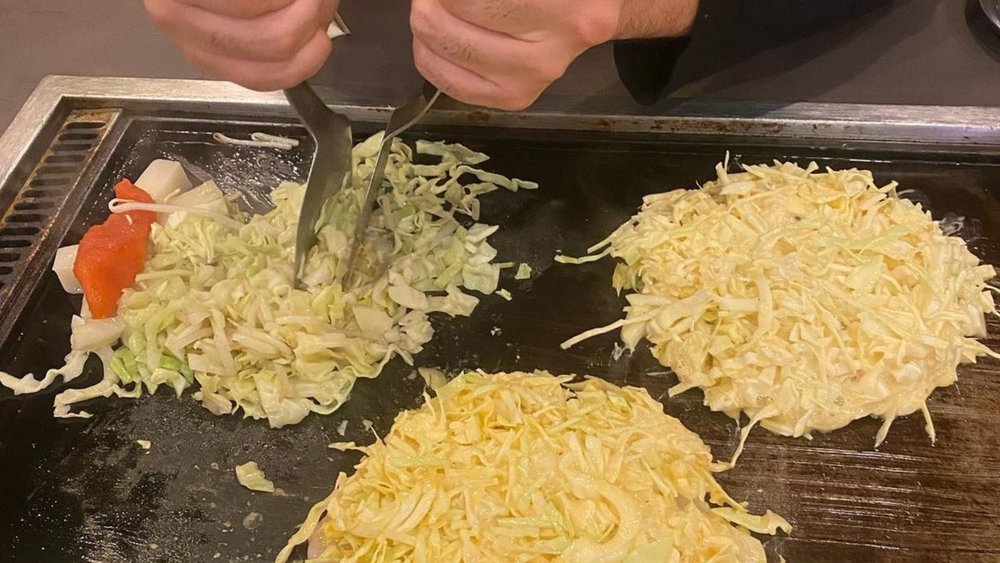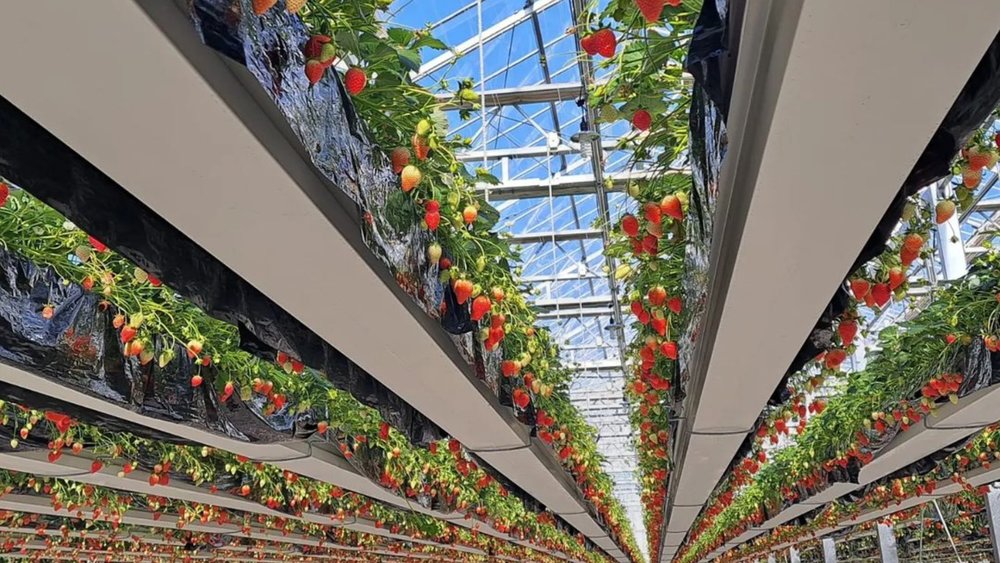Spring in Japan is magical! With cherry blossoms painting the town in dreamy hues and the exciting flavours of matcha and strawberries, Japan turns into a springtime wonderland. Unlike the winter chill, spring is that sweet spot, meaning it's not too cold nor too hot, so the country is bursting with things to do.
And what better way to soak it all in than by indulging in delicious springtime foods as you roam the streets during the spring season in Japan? Fret not—here's the lowdown on the seven must-try traditional Japanese food and spring foods to make your food trip as unforgettable as the season itself.
What do the Japanese people eat in the spring?
It's no secret that Japanese kids celebrate the change of seasons in tune with their diet and culinary selection, especially in Japan, which sees value in health. Spring season in Japan means that come March and April, tables are filled with traditional Japanese foods and supermarkets are replenished with a jackpot of fresh wild veggies.
It's a star-studded lineup of Kabocha (Japanese pumpkin), Satsuma-imo (Japanese sweet potato), Daikon (Japanese white radish), and Azuki (the Japanese red bean), among many others! And that's not all—the veggie parade continues with the likes of negi (Japanese spring onions), renkon (lotus root), edamame (soybeans), shiso (an aromatic plant), mizuna (a kind of salad leaf), and, of course, the fiery wasabi.
The superstar of the spring veggie scene that steals the spotlight, however, is bamboo shoots that are often served alongside rice with infused or sweetened soy sauce, or placed atop steamed rice! It can also be eaten as a side dish often paired with famous Japanese dishes like deep fried pork cutlet or teriyaki chicken.
But spring food and traditional Japanese dishes aren't limited to veggies. It ranges from sweetness to sour to savoury—the all-around famous miso soup or all-time favourite raw fish sashimi. Japan's got a rich variety of seasonal goodies, so join Klook on this springtime food trip!
7. Traditional Tea
Kicking things off in Kyoto, start your food trip with the Japanese tea ceremony. Traditional Japanese food is not complete without tea. Japan's tea game is on point and has been for over a millennium. The nation's love for tea began in the 8th century when China introduced this elixir, primarily sipped by society's elite for its medicinal wonders.
You'll feel like you've travelled back in time to ancient Japan because you'll be learning tea-making techniques like a local. What's more, you'll be getting the inside scoop on the significance behind each swirl and sip—all while being guided by tea masters who are experts at this craft.
Today, matcha is the most prominent tea variation around the world. This finely ground tea is crafted from the green tea plant that's taken care of under the shade, soaking up more chlorophyll and giving it that iconic green hue and unique muted flavour. After harvesting season, the leaves are powdered into what we fondly know as matcha. Just add hot water, give it a whirl, and you've whipped up your matcha!
While matcha has gained fame around the world, in Japan, it's revered as the star of Japanese tea ceremonies. Locals love pairing it with wagashi for a delightful afternoon snack, too.
6. Ohigashi
Crispy, crunchy, and oh-so-sweet—that's ohigashi for you! These traditional sweets are like the rockstars of Japanese snacks: low on moisture and packs a flavour punch that’ll keep you coming back for more.
It's loved among traditional Japanese sweets because this culinary masterpiece takes a lot of work. They start by whipping up a dough made from sugar and sticky rice cake flour. Then, they jazz it up with yellow and crimson red pigments, roll it out, fold it, and repeat until those colours are seamlessly blended.
They work their magic by cutting small leaves with a leaf-shaped cutter to make a piece of edible autumn art. For the grand finale, the leaf veins are drawn by hand with a homemade bamboo spatula, making a traditional sweet treat that's dry, crunchy, and technically a masterpiece. It's like the opposite of Namagashi, with all the moisture that you gotta devour on the spot. But what makes Ohigashi, though, is its longer shelf life, making it a treat you can savour for a time!
Looking to explore more spring food in Japan? Hop on a two-day foodie journey with Klook as we take you around to discover hidden gems and iconic Japanese foods across the city's diverse neighbourhoods. From eating sushi, filling rice balls from the konbini, udon noodles, and raw fish sashimi that capture Tokyo's food scene like no other, this is the ultimate food lovers' guide to Tokyo.
5. Ume
Time for a flavour adventure with ume (a.k.a. Japanese style plum or apricot)! Available in markets nationwide, these bad boys add a unique twist to spring dishes, bringing a burst of flavour that’s like a party in your mouth.
This little fruit is related to apricots and plums but definitely has its own unique twist, since it's been making waves in Japan since the Yayoi period, way back in 300 BCE. Umeboshi, the sun-dried and salted version, even gets a shoutout in Japan's oldest medical book from the 900s.
Now, not all ume are created equal—meet Nanko Ume. Larger and tastier, it's the go-to for various dishes and drinks. Whether you prefer the immunity-boosting umeboshi or love it simple like the classic umeshu, a Japanese drink made from ume fruit, there's honestly no wrong choice.
From ancient remedies to modern delights, Ume's role in Japan's culture is as wide and fascinating as its burst of flavour in your mouth!
4. Asari Clams
Spring brings the best time for Asari clams, also known as Japanese littleneck clams. From February to April, these small clams are popular in Japan for being nutritious. They're a good source of protein, minerals, vitamins, and omega-3. You can easily find them at the grocery store throughout the year, or simply dine in Japanese restaurants around the country!
These clams are traditionally eaten either steamed or braised, but there are many ways to enjoy this traditional Japanese food! Like what most locals do, these clams are often added to miso soup and traditional Japanese soup—it's also best paired steaming with Japanese rice wine and spring onions! If you prefer a dry Japanese meal, locals often stir-fry Asari clams with butter for a tasty treat!
3. Mochi
Mochi is the chewy sensation everyone loves—from kids to seniors, no one can resist mochi! It is made from glutinous rice called Mochigome, creating a sugary, fluffy rice cake texture.
Stuffed with sweet fillings like red or green bean paste, these rice cakes are bites of pure happiness. Chew, savour, and repeat is really the mantra when eating this Japanese comfort food.
But here's the fun part: flavours! Matcha, strawberry, sakura, and chocolate—there are many options created to suit Japanese tastes, all while making these foreigner-friendly, too! Take the daifuku, for instance, a matcha and chocolate duo that's like a flavour dance party in your mouth.
Now, let's talk, Sakura mochi! It's a pink rice cake with a hint of cherry blossoms, filled with sweet red bean paste, and wrapped in a cherry blossom leaf. Mochi is essential to Japanese food culture, and taking a bite is like a sweet escape to Japan. It's the perfect snack to bring for hanami or hina matsuri, too!
Searching for a no-nonsense food trip that’ll make you feel like a local? From takoyaki to tempura skewers, we’ve rounded up a guide to the 10 must-try Japanese street food that you shouldn’t miss.
2. Monjayaki
Monjayaki's got your taste buds covered if you're looking for a dish to experience an explosion of flavours! It's mochi grilled to perfection, infused with the zing of mentaiko and the creamy goodness of cheese.
Fun fact: Monjayaki is said to have been developed from mojiyaki, a trendy snack among kids in the late 19th century, literally meaning grilled letters.
Unlike its cousin, Monjayaki is a wheat flour-based concoction cooked with various ingredients on a hot plate, distinct from Okonomiyaki due to its higher water content. The mix of seasoning and sauce happens pre-cooked, and you devour it with small flat-spoons directly from the plate. To experience this, you can go to Tokyo's hotspots like Asakusa and Tsukishima for a monjayaki feast, a popular Japanese dish among tourists!
1. Strawberries or Ichigo
You can't wrap up a spring food tour without diving into some juicy Japanese strawberries, aka Ichigo. Sweet, refreshing, and the perfect finale to your culinary adventure. It's like spring in a bite! These berries, arguably one of the world's most popular and best fruits, are grown under strict conditions in Japan to ensure their delectable flavour and stunning presentation.
Did you know there's even a dedicated Strawberry Day in Japan on January 15th every year? Now that just proves how much love there is for strawberries in Japanese cuisine and Japanese cooking. Renowned for its deep red colour, Japanese strawberries boast a sweet flavour with just a hint of acidity. And yes, they're a bit pricey, but trust us, they're worth every yen. Sweet, refreshing, and the perfect finale to your food trip, biting into these strawberries is like experiencing spring in a single bite!
Craving a taste of Hokkaido? Explore our breakdown of the best Hokkaido snacks. From Shiroi Koibito cookies to fresh seafood snacks, these are the must-try snacks that define Hokkaido's culinary landscape.
Written by: Jaf Tumale































